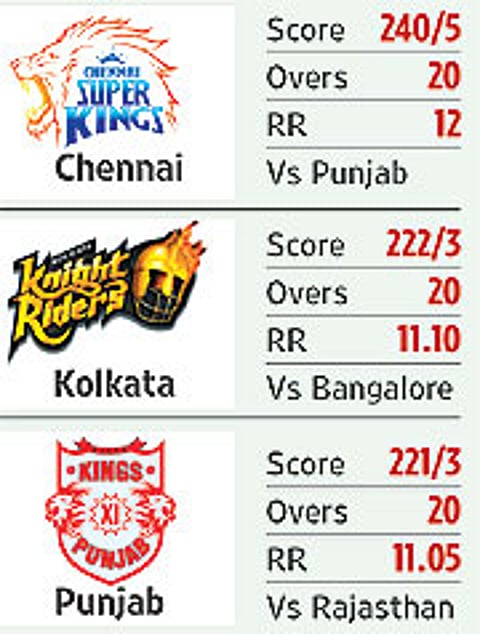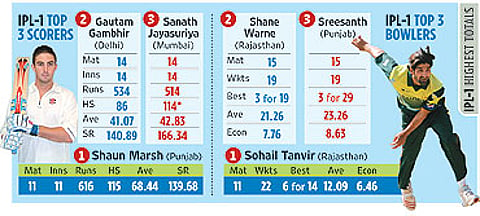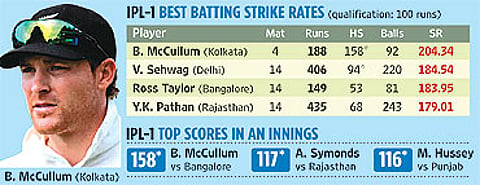How To Build A Raging Fire
The <i >Slumdog Millionaire</i> author tours IPL-2's base, superstructure, and floats a few wacky trial balloons
When Twenty20 cricket first burst on the scene in 2003, it was dismissed by critics as the ODI’s country cousin, a brash, arrogant youngster, high on style and low on substance. But the pre-game entertainment, the cheerleaders and the razzmatazz, and the feast of sixes and fours managed to pull in the crowds. The first Twenty20 match, held at Lord’s in July 2004, set the record for the largest attendance for any county game other than a one-day final since 1953.

The reason is not difficult to fathom. Twenty20 is cricket on speed. In an era of hectic lifestyles and falling attention spans, it gives spectators more drama and intensity in three hours that they would get from a whole-day match. And even though it is a heady cocktail of money, entertainment and media, at its core it is cricket. It requires the same skills and expertise that are needed for success in the One-day and Test versions of the game, in fact even more so. It is an unforgiving format which requires perfect chemistry between technique and innovation and leaves no room for complacency or error. That is why T20 is also a great equaliser. Even a relatively inexperienced team can pull off an upset because just a couple of overs can change the entire balance of the game.
Just as T20 revolutionised domestic cricket in England, creating a new fan base, IPL has transformed international cricket, creating a new cult around itself. Its success lies in taking cricket professionalism to its very limits by transplanting a franchise model imported from Europe and the US into India. You now have the best players in the world playing not according to nationality but according to market forces in the world’s most lucrative cricket arena, the Indian domestic league.

India may be the soul of world cricket, but IPL is its commercial heart. Just as Who Wants to be a Millionaire changed the ground rules for quiz shows by injecting a massive dose of money into the equation, IPL has changed the dynamics of the cricket economy. At modest estimates, IPL involves a total of approximately $2.5 billion in terms of overall revenue. Its detractors felt league cricket in India would not be able to sustain such massive amounts, but IPL’s opening edition took India by storm and showed that a franchise-based model could be entrenched, and quite profitably too.
Will the second edition, now relocated to South Africa, be an equal success? If IPL was meant to promote loyalties based on cities, the move to situate it outside India defeats the very purpose of the tournament. However, there is too much riding on the success of IPL-2 for it to be allowed to fail. In fact, it may well see an enhancement of its support base. The choice of South Africa was a smart one. The rains have gone and the autumn-like weather is tailor-made for cricket. South Africa is located in a convenient time zone for purposes of live viewing around the globe, not just in India. Most importantly, the spectators here are great cricket lovers and the T20 format is extremely popular. South African captain Graeme Smith was himself surprised at how many of his compatriots watched last year’s inaugural IPL edition. Lalit Modi and his team are running an aggressive marketing campaign, helped by the familiarity of local audiences with Brand India and Bollywood. The organisers have sensibly decided to keep ticket prices reasonable, with the cheapest ones costing just 20 Rands (around Rs 100). A South African friend told me that he even expects the locals to start identifying with specific IPL teams. One newspaper has already recommended the Bangalore Royal Challengers as it has the maximum number of South African players. Local tie-ups, like the one Rajasthan Royals have done with the Cape Town-based Nashua Cape Cobras, will also allow IPL franchises to access the loyal fan base of South African domestic teams.

Even though that controversy appears to have been resolved, filling stadiums would be one of the biggest challenges facing IPL, which is aiming to sell over a million tickets for the 59-match carnival. Despite media reports that tickets for the opening IPL double-header in Cape Town were sold out within two hours of going on sale, a visit to the Computicket website reveals that tickets for all the games are still available. While weekend matches are likely to see strong attendance, the weekday matches, especially the ones beginning at 12.30 pm, may be difficult to sell. It all depends on how closely contested the first few games are and how fast the buzz spreads beyond the 1.5 million-strong Indian community, since the IPL will be competing with the English Premier League, which has exactly the same schedule as the IPL and commands a huge following in South Africa.
What does South Africa get out of all this? For one, a significant cash injection for Cricket SA and the local economy. Modi estimated that the IPL would consume 30,000 rooms in hotels and 10,000 airline tickets. The South African government is gearing up for a massive influx of spectators, journalists, players, franchises and their entourages. The IPL, thus, becomes a useful dry run, albeit on a smaller scale, for the fifa World Cup which South Africa is proudly hosting in 2010. The large number of strategic partnerships that the IPL has entered into with South African companies, ranging from Bukhara to hrg Rennis, shows that local businesses also see an opportunity of cashing in on the cricket bonanza. It is thus a win-win arrangement for all sides.
Beyond the money, the staging of the IPL in South Africa will catalyse the globalisation of cricket. Its success will attract new adherents to the game. There is already talk of an IPL-style tournament in the US and Canada.
So what next for cricket? Someone called the IPL ‘TV’s ultimate reality show’. But once the novelty of cricket’s biggest reality show wears off, what ‘new’ entertainment can we provide viewers? I suggest a wwe-style cricket soap opera, a tournament of ‘pre-scripted’ matches, where you basically give audiences what they want. You want six sixes in an over? You get it, courtesy an obliging bowler. You want a double hat-trick in one match? Made possible by a posse of cooperative batsmen. You want a tie on the last ball? Delivered. The on-field pyrotechnics will be spiced up by off-field antics. You could have an episode in which a wicketkeeper’s wife runs away with the tearaway fast bowler from the opposing team. The husband will naturally vow revenge. Then we can all gather in front of the TV and watch the next instalment of ‘Bat, Ball aur Badla’. I bet it would give the Saas-Bahu serials a run for their money. Indian Cricket League, are you listening?
(Vikas Swarup is the author of Q & A, which was turned into the Oscar-winning Slumdog Millionaire. India’s deputy high commissioner in South Africa, he writes here in his personal capacity.)
Tags